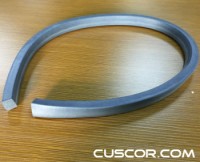Weatherstrips, also known as weatherseals or weatherstripping, are materials used to seal the gaps around doors and windows to prevent air and water infiltration. They help improve energy efficiency by reducing drafts, keeping out moisture, and enhancing overall comfort in a building.
Weatherstrips come in various materials such as rubber, foam, vinyl, or metal, and they are designed to fit different types of door and window frames. Common types of weatherstrips include adhesive-backed foam tapes, V-seals, bulb seals, and magnetic weatherstrips.
Properly installed weatherstrips can help reduce energy costs by minimizing heat loss in winter and heat gain in summer. They also contribute to soundproofing and provide better insulation against outside elements.
When selecting weatherstrips for your doors and windows, it's essential to consider factors like the size of the gap, the material of the frame, and the level of protection needed. Regular maintenance and replacement of weatherstrips can ensure their effectiveness in sealing out drafts and improving energy efficiency in your home or building.
The application of weatherstrips is very wide, which can effectively isolate wind and moisture noise, from cars, ships to buildings doors, and windows. Depending on the application scenario, there are many types of weatherstrips. EPDM is the most widely used one.






